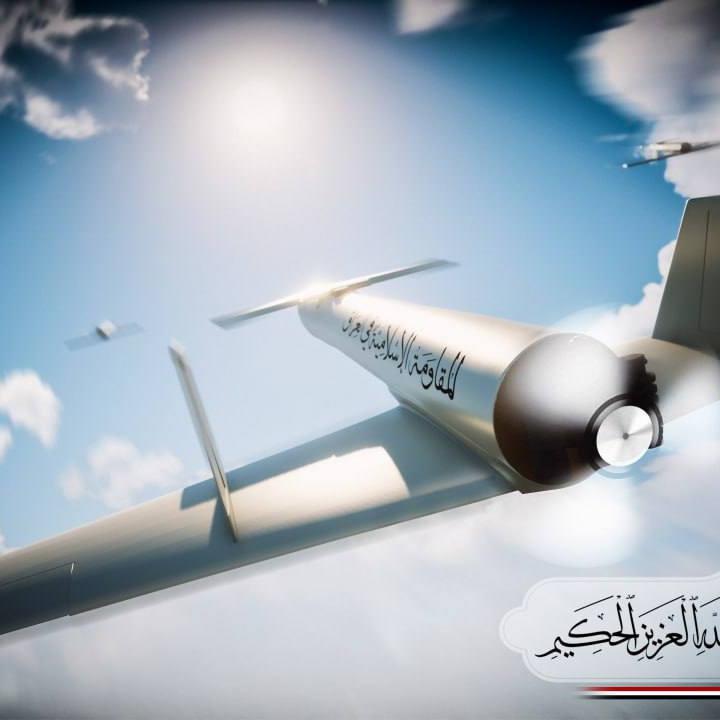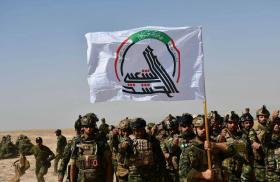
The Anti-Israel Surge by Iraqi Militants: Metrics and Trends

Although relatively few drones or missiles seem to make it to Israel, launches are steadily increasing, potentially inviting overt retaliation inside Iraq.
The daily rate of attacks that Iran-backed militias in Iraq claim to launch against Israel has doubled in the first half of May compared to April, the third month in a row it has increased. The claims are being issued by the Islamic Resistance in Iraq (IRI), an umbrella brand that U.S.-designated terrorist groups Kataib Hezbollah (KH), Harakat Hezbollah al-Nujaba, and smaller confederates use to take credit for attacks.
Since January 2024, the Iraqi fasail (armed groups) have surpassed Yemen's Houthi movement in terms of strikes on Israel, though the Iraqi attacks did not really gain consistency and volume until after the IRI announced a near-total suspension of strikes on U.S. forces on February 4—a decision that stemmed from escalating U.S. military responses and growing Iraqi government embarrassment over anti-U.S. attacks.
After the general lull in February—during which militias laid low following two heavy rounds of U.S. strikes—the past three months have seen a major escalation against Israel, which seemingly became an outlet for the impotence the militias felt after being ordered to stop striking American bases. Claiming to strike Israel has also enabled Iraqi groups to prove their “resistance” credentials amid the ongoing war in Gaza.
The invigorated anti-Israel campaign has included several interesting new trends:
- Focus on Israel's ports. Aside from militia grandstanding and reputation-building, the main targeting focus and/or desired effect of most Iraqi and Houthi strikes in this campaign is to blockade Israel. This motive has also been evident in militia discussions about Jordan-Israel land links. Attacks on Israeli ports have increased to an average of 0.93 per day this month, compared to 0.3 in April and 0.009 in November-March.
- Increased promotion of launch videos. More videos are being released alongside IRI claims than before March, often of high-quality. Some individual launches are even filmed from different angles to provide multiple videos for use in the same claim. In Militia Spotlight's view, IRI has been relatively thorough in not over-claiming during the Gaza war. In other words, these launch videos are likely real and show what they purport to show.
- Rising use of al-Arqab cruise missiles linked to KH. These missiles (Iranian name Paveh, Houthi name Quds) were used in a spate of attacks in January, including one failed launch after which a complete missile was photographed by Iraqi citizens. Yet the use of al-Arqabs has greatly accelerated and been more widely propagandized since April. This attack series seems mainly linked to KH launch areas south of Baghdad, supporting a tentative assessment that Iran is exclusively providing al-Arqab systems to KH. (In the table above, anti-Israel strikes with “appropriate/suitable weapons” have been grouped with cruise missiles, as the phrase tends to be associated with non-drone, non-rocket attacks; in some cases, they have been linked to al-Arqab attacks.) Moreover, a May 20 explosion at a militia base south of Baghdad may have been an unclaimed Israeli attack on a cruise missile storage site.
- Specialized use of KAS-04 drones linked to KH. Only two of twenty drone launch videos have shown KAS-04 (Houthi name Sammad) V-tail white drones, versus eighteen that showed Shahed-101 X-tail black drones. Both KAS-04 attacks had a special aspect: the first (on April 27) was dedicated to Bahraini militants close to KH, and the second (May 13) was identified as involving an “al-Arfad” drone. Not coincidentally, the latter type shares a name with Arfad (aka Abu Karrar al-Hamidawi), the dead brother of KH secretary-general Ahmad Mohsen Faraj al-Hamidawi (aka Abu Hussein). Arfad was the Hamidawi family's most important initial connection with KH and Lebanese Hezbollah; he was killed in Syria in 2013.
- Assessed Nujaba focus on attacks using Shahed-101 drones. Militia Spotlight tentatively assesses that Nujaba is mainly focused on smaller X-tail drone attacks across Syria and toward Israel, very few of which can survive the long flight across Israeli- and U.S.-surveilled airspace. Nevertheless, Israel may have been annoyed enough by the high volume of such attacks to retaliate against Nujaba in Syria. On May 8, an Israeli airstrike destroyed a Nujaba cultural center (and probable operating location) in the Sayyeda Zeinab area of Damascus.
Stating the obvious, if Iraqi militia attacks on Israel intensify, result in casualties, or even just maintain harassment of vital ports, then the risk of Israeli action inside Iraq will rise. Israeli strikes tend to raise the level of agitation among Iraqi militias and political blocs, not only against Israel, but toward the U.S. presence as well.




